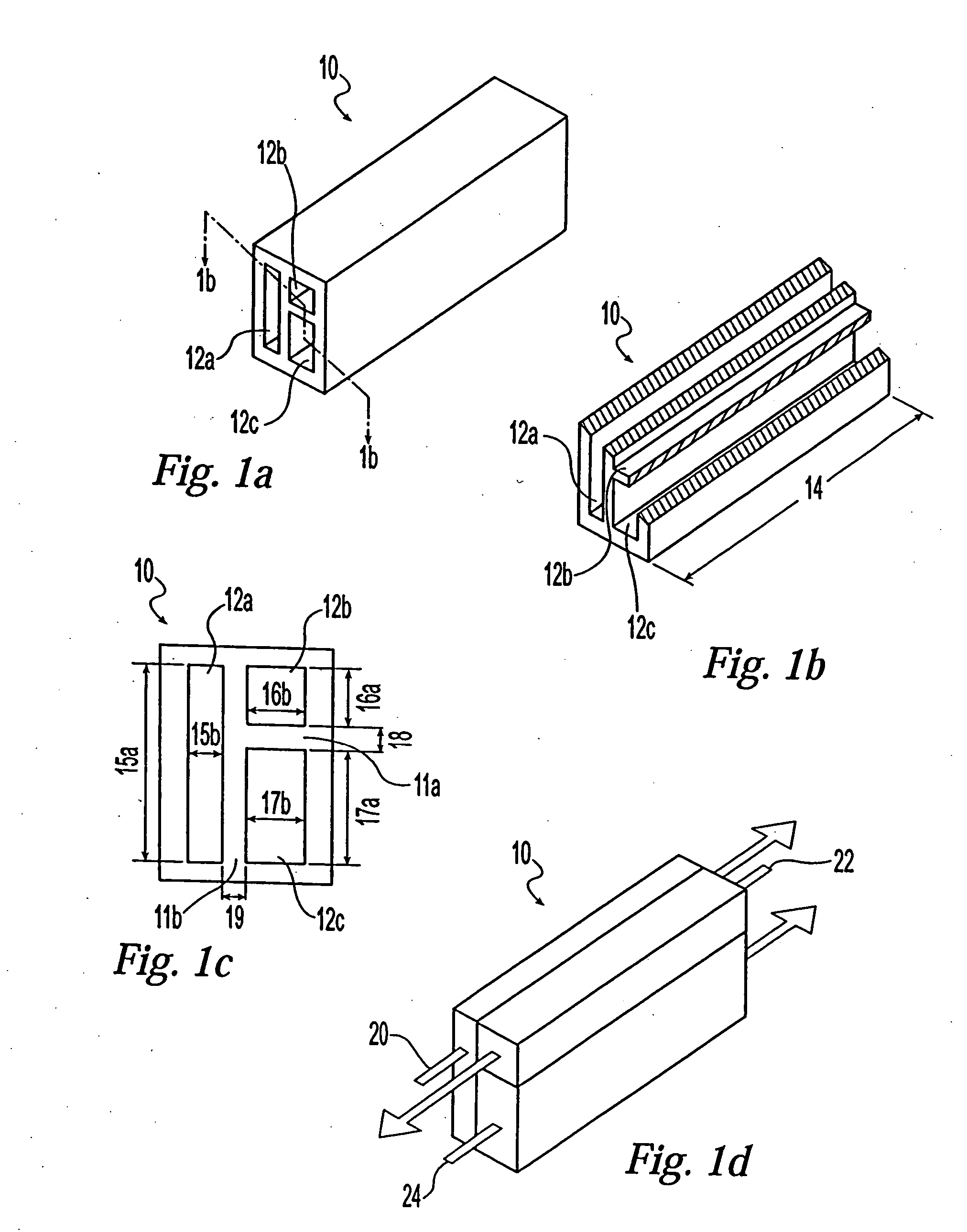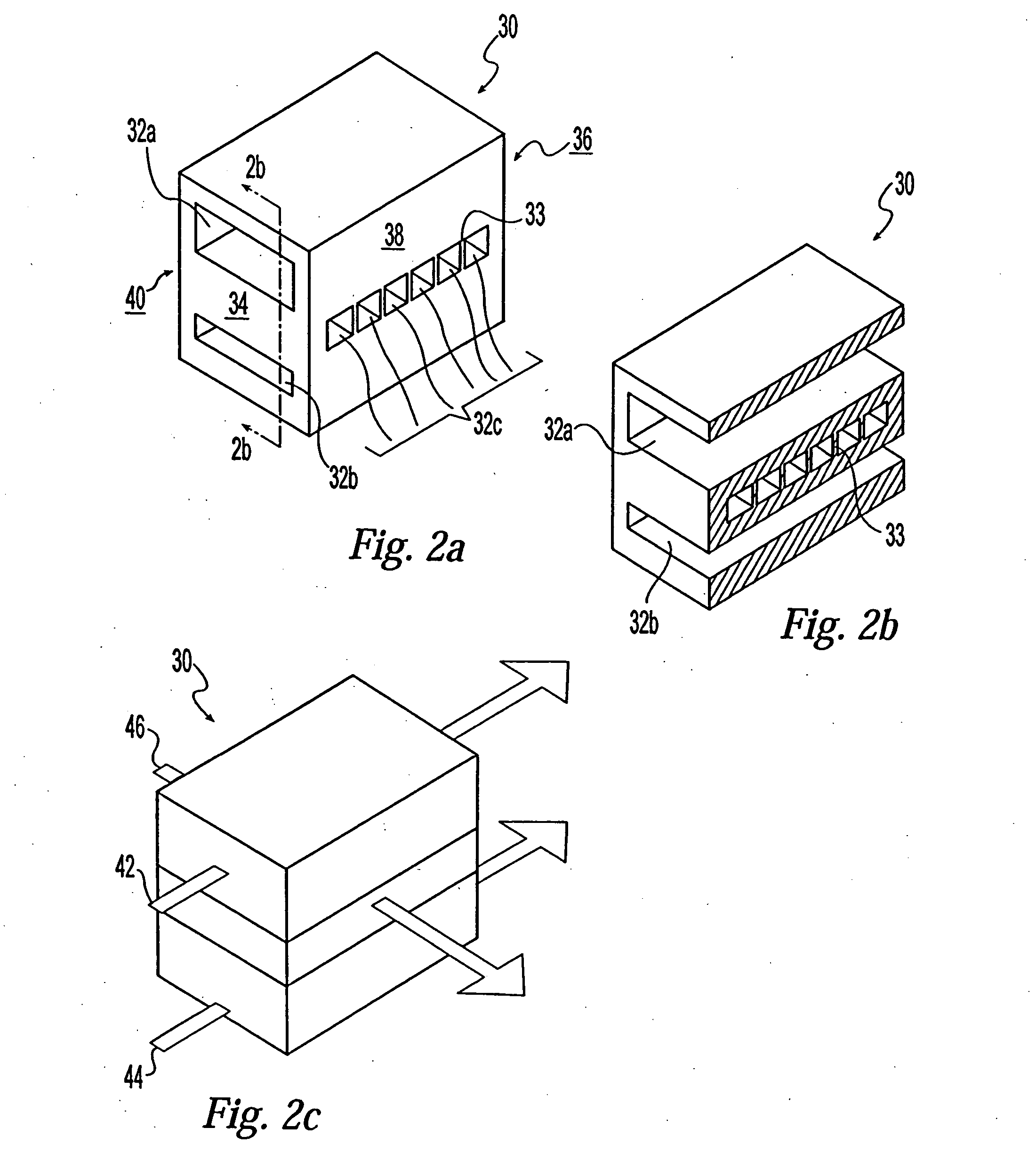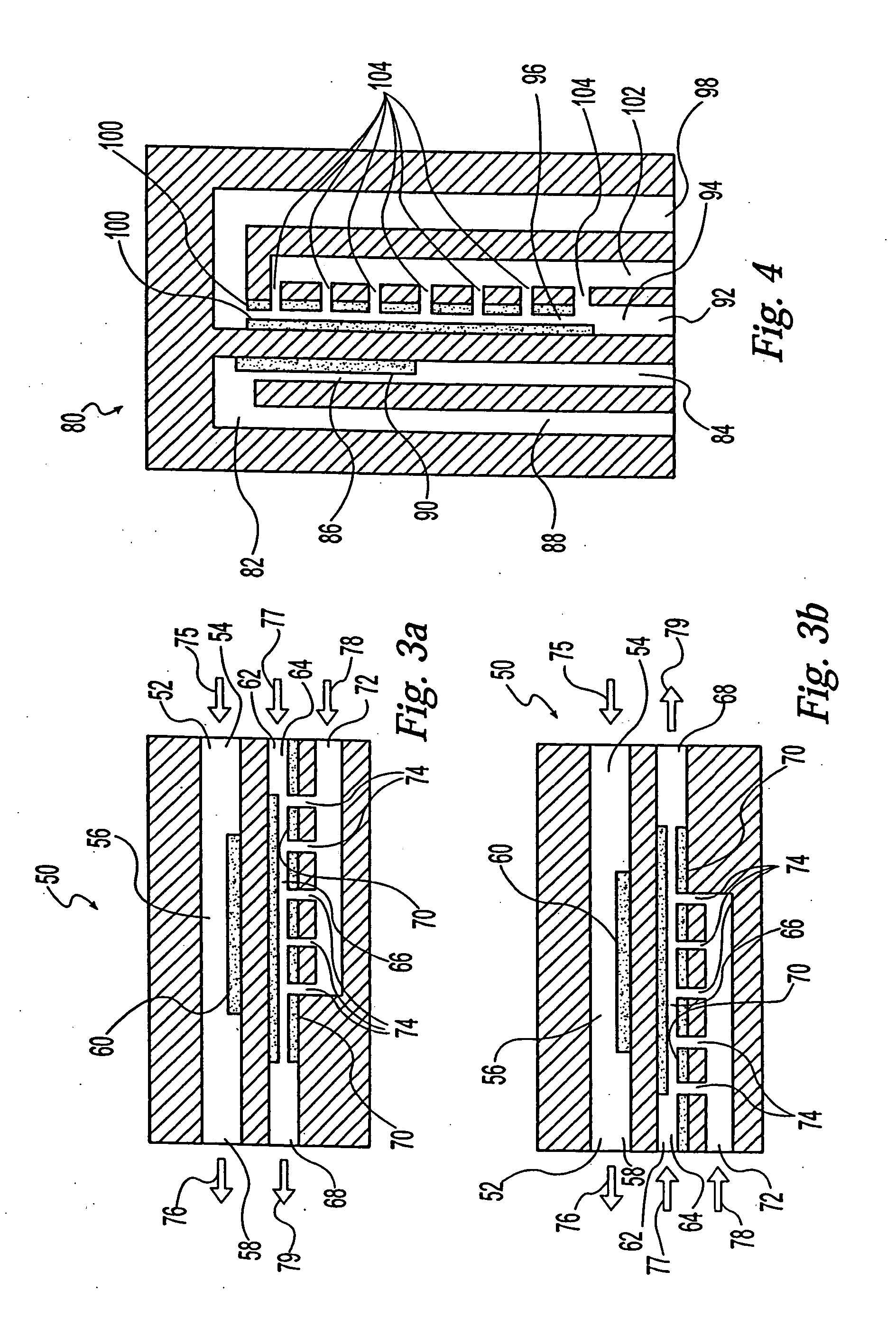Multi-stream microchannel device
a microchannel device and multi-stream technology, applied in lighting and heating apparatus, physical/chemical process catalysts, bulk chemical production, etc., can solve the problems of insufficient design of mct heat exchangers, undesirable byproduct formation, corrosion, erosion, etc., to achieve the effect of reducing heat loss to the ambient, high throughput, and avoiding the formation of undesirable byproducts
- Summary
- Abstract
- Description
- Claims
- Application Information
AI Technical Summary
Benefits of technology
Problems solved by technology
Method used
Image
Examples
example 1
[0175] Referring now to FIGS. 10-15, a heat exchanger was specifically designed to simulate a heat exchanger according to one embodiment of the present invention. The heat exchanger used five distinct fluids, denoted in FIGS. 10-15 as Fluids A, B, C, D, and E. Fluids C and D were split into two streams each with each stream flowing through separate microchannels; fluids A, B, and E each flowed through separate microchannels (as Streams A, B, and E, respectively), making a total of seven microchannels in the heat exchanger. As shown in FIG. 10, Fluid C flowed through two microchannels as Stream C1 and Stream C2. Similarly, Fluid D flowed through two microchannels as Stream D1 and D2. The experimental results show the performance of the heat exchanger and the results as compared to numerical simulations from a computer program.
[0176] Referring again to FIG. 10, the heat exchanger consisted of seven rectangular microchannels, each ten inches (in.) long. The height of each microchannel...
PUM
| Property | Measurement | Unit |
|---|---|---|
| height | aaaaa | aaaaa |
| height | aaaaa | aaaaa |
| height | aaaaa | aaaaa |
Abstract
Description
Claims
Application Information
 Login to View More
Login to View More - R&D
- Intellectual Property
- Life Sciences
- Materials
- Tech Scout
- Unparalleled Data Quality
- Higher Quality Content
- 60% Fewer Hallucinations
Browse by: Latest US Patents, China's latest patents, Technical Efficacy Thesaurus, Application Domain, Technology Topic, Popular Technical Reports.
© 2025 PatSnap. All rights reserved.Legal|Privacy policy|Modern Slavery Act Transparency Statement|Sitemap|About US| Contact US: help@patsnap.com



